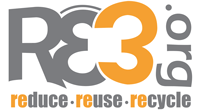Guest Blogger – Megan
Again, from the book “Fostering Sustainable Behavior,” the first step of social marketing is to identify barriers and benefits to recycling. This is basically the same thing as getting to know your audience. You wouldn’t talk about quantum physics with a third grader, right? The same goes for recycling. All communities are different, so they can have different opinions and reasons for not recycling. The problem in one community might be a lack of convenience, but the problem in another community might be lack of education about recycling.
After you get to know your audience, you can start to break down the barriers people have and show them that there are actual benefits to recycling. Some typical barriers to recycling include things you’ve probably heard before, like convenience, established habits, beliefs, time and misinformation. It’s important to do your research to determine specific barriers in your community. Don’t skip this step! It can be cheap and not very labor intensive depending on the method you choose. Try literature reviews, focus groups, personal interviews and surveys (our personal favorite)!
After you have the barriers pegged down, then you can focus on benefits. Typically, there are two benefit types to consider: real and perceived. Real benefits include things like money, time and health, while perceived benefits include mindsets like “I will fit in,” “it is expected of me” and “I will get rewarded.” It’s best to combine real and perceived benefits to help your program reach its maximum potential.
A great example of this step can be seen from Brunswick County, who surveyed their residents to gauge their interest in recycling and attitude toward it.
So, to recap: determine the behavior you want to promote, consider the target audience and think of the conditions an individual will face if they choose to adopt the behavior.
Next week, on to strategies!

No comments:
Post a Comment